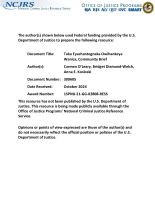Just Sexual Assault Response in Indigenous Communities
In episode four of our 2023 Sexual Assault Awareness Month mini season, Just Science sat down with Mark Pooley, founder of Native Search Solutions, to discuss how the challenges faced by Indigenous communities impact sexual assault investigations. In the United States, many Indigenous communities are geographically isolated, which contributes to a lack of resources such as police staffing and training, healthcare, or even access to the Internet.







